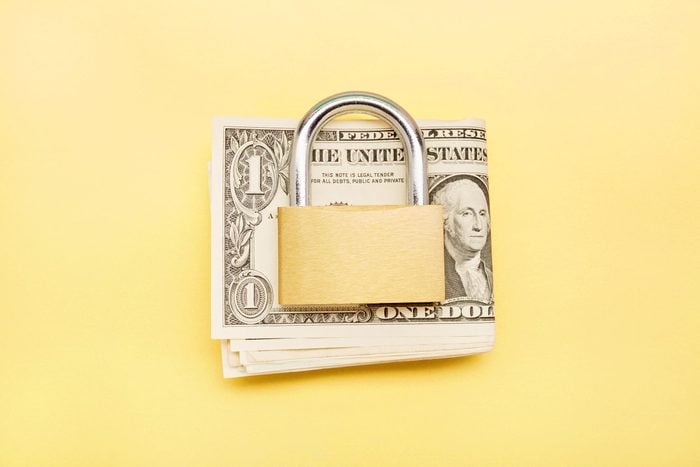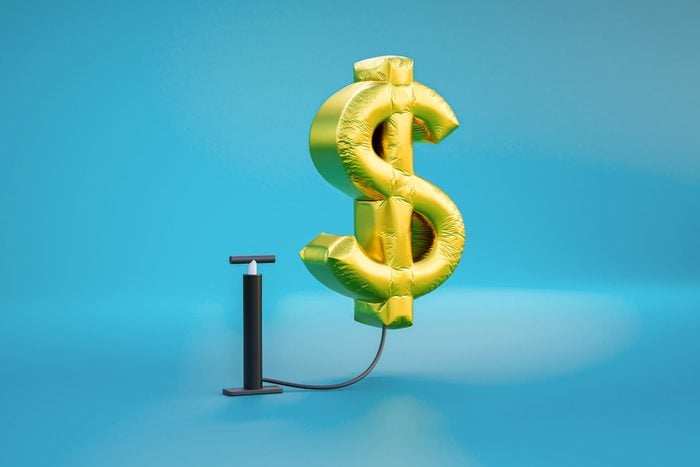
Retirement tips you can’t afford to miss
No one wants to work until they die—and they shouldn’t have to. As a certified financial planner, a huge part of my job is helping people plan for their futures by giving them actionable retirement tips. About 80% of financial planning involves maximizing your earnings, boosting your savings and budgeting now so you can have the life you want later. And having a fulfilling, healthy retirement is something well within your reach … as long as you avoid a few common mistakes.
Whether you want to retire early, get out of debt or start saving money more strategically, a CFP can help you. Then you can consider what you want to do in your golden years, including possibly moving to one of the best states to retire in—or even the best countries. That’s the fun part!
To help you get started, here are some of the top retirement mistakes I see people making—and what you should do instead. This information can make all the difference between stress and stability, and no one should be without it.
Get Reader’s Digest’s Read Up newsletter for more retirement tips, humor, cleaning, travel, tech and fun facts all week long.

Waiting until 65 to retire
There’s a widely held belief that you can’t retire until you’re 65. But … who made this rule? It’s not your employer or the government. In fact, you can start receiving some of your Social Security retirement benefits as early as age 62. This idea is actually based on the outdated pension system, where companies offered a pension plan to employees who stayed with the company a certain length of time. However, companies no longer want to bear that risk and expense, so hardly anyone receives a pension anymore.
So, what’s the issue here? Waiting too long to retire makes you miss out on time you could be enjoying your life, and there isn’t always a significant cost benefit to waiting. The timing of your retirement should be based around your savings, goals, needs and priorities—not the date on your driver’s license.
What to do instead: Know that your retirement age is flexible and that retirement planning is ultimately about values and priorities. How do you want to live your life? Where? With whom? What is most important to you? What makes you happiest? Depending on how you answer these questions, your goal retirement age could be anywhere from 40 to 80. The important part is to set a goal age to retire that fits with your life, then you can make a retirement plan to get you there.

Thinking you’re too young to worry about retirement
It’s a common saying in financial circles that the eighth wonder of the world is compounding interest. Basically, money invested over time will grow exponentially—yet too many people fail to understand exactly how much this can make their money grow. I’m not talking about a savings account with a percentage of interest paid yearly. To take full advantage of compounding interest, you need to invest in a balance of stocks, bonds and mutual funds. These things provide passive income, building up your bottom line without you having to do any additional work.
But investing takes time. Someone who starts planning for retirement at 25 or 30 will have decades more of compounded interest accrued than someone who waits until they’re 50. For example, let’s say you start a retirement account at age 30 with $5,000 and then invest $500 a month; assuming an interest rate of 7%, you’ll have $882,804.18 banked by the time you hit 65. On the other hand, if you start by investing the same amount at age 40, just 10 years later, you’ll have $406,631.39—or less than half.
What to do instead: Starting to think about retirement at any age is better than not planning at all, but ideally, you should start planning by age 30. Talk to a CFP about these retirement tips (many will offer a short consultation for free), or read up on what you can do now to start saving.

Not taking advantage of your job’s retirement benefits
Most full-time employees are eligible for a 401(k) retirement account through their employer’s benefits. But while nearly 70% of private employees have access to retirement benefits, only half actually use them, according to a 2022 survey done by the U.S. Department of Labor. This is a huge mistake, because you’re leaving free money on the table.
Plus, it’s simple to set up. Just talk to your HR rep, fill out some paperwork and after that, you can pretty much forget about it.
What to do instead: Know what your retirement benefits are, and use them! Take the time to set up your retirement account, and automatically have some of your paycheck deposited each month. How much? You should be saving 10% to 15% of your gross salary for retirement.

Contributing less to your 401(k) than your company matches
Some employers offer to match the funds you contribute to your 401(k), up to a certain amount. The 401(k) contribution limit for 2023 is $22,500 for employee contributions and $66,000 for combined employee and employer contributions, or 100% of the employee’s compensation—whichever is less. This is literally free money. Many people mistakenly believe they can’t afford to save the maximum match amount. While you should never save more than you can afford, I’ve found that most people can probably budget to save more than they think they can. Thanks to the magic of compounding interest, this small sacrifice will pay off big-time down the road.
What to do instead: Put in the maximum amount of money your company will match. If this retirement tip doesn’t make sense for your financial situation, that’s OK, but contribute as much as you can reasonably afford. Remember, this is extra money they’re just giving to you. Why would you turn down free money?

Not having a retirement account because your company doesn’t offer it
If your job doesn’t offer benefits—and one in three Americans are gig workers without benefits—you are still able to open retirement accounts and put money into them. And you absolutely should. Even if you work a job where you live paycheck to paycheck, you should still be trying to put aside a small amount of money toward retirement.
What to do instead: It’s true that you can only open a traditional 401(k) through your employer, but if you’re a gig worker and/or self-employed, you can open a solo 401(k) plan through your banking institution. A more flexible option is a traditional, Roth or SEP IRA. If you’re a lower-wage worker, it’s worth it to find an employer that offers retirement benefits; Starbucks and Target both do.

Having too much money in your 401(k)
Wait—I just told you to contribute the max amount to your 401(k), but now I’m saying you can have too much? Yep! People often don’t realize that there is more than one type of retirement account, and a 401(K) isn’t the most tax-efficient. It’s subject to higher taxes after retirement, and you have less control over how your money is invested. You’ll also be penalized if you pull out your money early.
Generally speaking, 401(k) contributions are pre-tax dollars, so the money is taxed when you withdraw it to pay for your retirement. Currently, that rate is 20%. On the other hand, the money you are contributing to an IRA is money you’ve already paid taxes on, so you can withdraw it tax-free at any time.
How much is too much for your 401(k)? The percentage of your retirement that should be in your 401(K) vs. your IRA or other account is a tricky question, and it varies based on your age, employment status, salary, tax bracket and other personal factors. A CFP can help you figure out the best balance for you.
What to do instead: You should certainly have a 401(k) if your employer offers it, as it provides certain protections. But some of your retirement funds should be put into other accounts, like a Roth IRA.
If you prefer to pay the taxes later (and let the interest accrue in your favor), keep more of the money in the 401(k). If you need the flexibility of withdrawing your money early, keep more in the IRA. This is painfully over-simplified, but again, a good CFP can help you estimate your retirement tax bill.

Not understanding how retirement taxes work
Tax laws about retirement are confusing and constantly changing, but the one certainty is this: Your retirement money will get taxed. The government will get its cut one way or the other. This includes Social Security! Far too many people think that because Social Security is a tax, it means the money is already taxed. It’s not. People will have to pay taxes on up to 85% of their Social Security benefits. Not understanding that may lead you to believe you have more money saved than you really do.
What to do instead: Be aware that taxes will be a big factor down the road. However, how much you contribute to Social Security now, how much Social Security money you can expect when you retire, how much money you’ll owe when you start receiving the payments and when the tax bill is due varies based on a mind-boggling number of factors. (Is there anything more mind-boggling than the U.S. tax code? Even money experts struggle with it.) To get a rough idea, use the Social Security Administration’s Social Security retirement calculator.

Forgetting to factor in health-care expenses
Everyone thinks they’re going to be perfectly healthy forever … until they’re not. Plus, people are living longer, and that increased life span comes with higher costs. Medical care is actually one of the things that will cost you more when you retire. Yet a lot of folks want to plan for a retirement of golf trips, retirement cruises and summer homes—while forgetting about cancer, dementia and chronic conditions that must be monitored, like heart disease.
What to do instead: Take an honest look at your personal-health risk factors and your family history. A rule of thumb for the average person is to save $150,000 to $200,000 for medical expenses alone during retirement.

Not planning for long-term care
It’s estimated that more than 70% of Americans will need long-term care at some point in their retired lives. (Think: a retirement home, memory-care facility, long-term hospital care or an in-home nurse.) This is a different category than health-care costs and living costs, and it gets expensive, fast.
Currently, the average monthly cost is $4,000 for a retirement home and $5,100 for in-home care—and little to none of it is usually covered by health insurance. Yet despite it being a very expensive near-certainty, many people don’t include these calculations in their retirement budgets, and I’ve seen this bankrupt people. I had a client who, due to an unforeseen illness that required in-home care, used up his entire retirement savings in six months. What should have lasted him years was gone in a flash, and not only was he left with no savings but he was also stuck with a giant medical bill. He had no choice but to declare bankruptcy.
What to do instead: Assume that you will need long-term care at some point, and add an extra $250,000 to $300,000 on top of your regular retirement savings. Because long-term care is often necessary due to a catastrophic illness or injury, it’s very difficult to predict who will need it, for how long and how much it will cost. It may be worth it to purchase long-term care insurance. Just be aware that this type of insurance is “use it or lose it,” so if you don’t end up needing it (and usually you’re not the one who gets to decide that), then that money is just gone.

Withdrawing money early
What many people see as the biggest problem (but I see as a major benefit) with retirement accounts is that the money is largely untouchable. The purpose of these accounts is to encourage you to save that money—and part of that motivation is penalizing you if you withdraw it early.
It’s a huge temptation! You see that large sum just sitting in an account, and you may think that a home remodel, a cruise or even an education would be a better use of that money. First, those are things you should be budgeting for aside from retirement, but second, it’s rarely worth it because the penalties for withdrawing retirement money early are so high.
What to do instead: Unless you have a dire emergency, do not touch your retirement accounts. The amount you can be penalized for early withdrawals (usually defined as before 59.5 years of age) can be up to half. Look into every other option—like taking out a home equity loan, getting a second temporary job or asking family for help—before you tap into your retirement accounts.

Picking a plan that doesn’t match your personal risk tolerance
Retirement accounts rely on investing funds in the stock market. Investing is inherently risky, and people have different levels of risk tolerance, based on their personalities, life situations, planned career trajectory, family situation, assets and other factors. For instance, someone with a large family and little savings will want to invest their retirement funds in a low-risk account, whereas someone who has plenty to live on and no dependents can afford to make higher-risk (but perhaps higher-reward) investments.
Age is a huge factor. It’s not uncommon for younger people to have a higher percentage of their retirement in higher-risk investments and then gradually switch that over to lower-risk accounts as they get closer to retirement age. Yet way too many people read about a flashy retirement account online and invest beyond their risk tolerance. Not only is this stressful, but in the worst-case scenario, it can wipe out all your savings.
What to do instead: Get off the internet investing boards, turn off the financial news and talk to a CFP who can help you assess what risk you can tolerate and which plan best matches that.

Relying too much on Social Security benefits
“Why do I need a retirement account? Isn’t that what Social Security is for?” If I had a dollar for every time I’ve heard that statement, I’d already be retired myself. (I’m 43 and definitely not retired, in case you’re curious!) Social Security benefits are much more modest than many people realize. In 2023, the average Social Security retirement benefit ranged from $1,600 to $1,800 dollars per month.
Despite the fact that the government has been taking Social Security out of your paycheck for your entire working life, you don’t get all that money back, and you will still have to pay taxes on it after you retire. (People often misunderstand what the Social Security “payroll tax” is. It’s not a personal fund set up for your retirement, and it’s not optional.)
What to do instead: Look at how much money you need currently to live comfortably. (The average American makes about $5,000 per month.) Then plan to save the difference between that and your Social Security benefits, plus a bit more.
Will Social Security still exist when you retire? That is a common question I hear from younger folks, and while it’s impossible to know the answer, I think it probably will, so it’s safe to include it as part of your retirement plans. Just don’t make it your entire retirement plan.

Checking your retirement accounts daily
When the stock market is skyrocketing and people are watching their retirement portfolios go up in a nearly straight line, it can be easy to think that this will always be the case and to think “that number” is what you actually have. It’s not. And watching the money “won” and “lost” can cause people to make some really bad financial decisions, like moving money quickly in and out of different investments, which can incur steep fees and tax penalties.
If you base all your retirement budgeting on the numbers when the market is high, then you’ll most likely end up short. Truth is, the markets go up, and they will always come down again. When and how much is the billion-dollar question, but plan on variations in the market and, consequently, in your portfolio. How much money you have to spend in retirement isn’t a static number, so don’t get used to the number—good or bad—you see in your accounts.
What to do instead: Don’t check your retirement accounts daily. Look at the average number over time—and I’m talking years, not months. For this retirement tip, avoid changing your investments based solely on market fluctuations, and save some money in a traditional savings account that is not tied to the stock market. I recommend everyone have six months of living expenses saved in an emergency fund. Because this isn’t an investment, it won’t really increase the money, but it also won’t disappear if the stock market crashes.

Not doing the inflation math
Underestimating inflation can make you save less than you really need. Unfortunately, inflation is an economic constant, so when you’re considering how much money you need to save today to take care of retirement in the future, you also need to pay attention to how much things cost today versus how much they will likely cost in the future.
Inflation can be unpredictable, but I tell people to look at the price of a gallon of milk over time to get a rough gauge. For instance, grocery costs (including milk) have gone up about 10% since the pandemic, meaning that in 2019, the average for a gallon of milk was $3.18, but today it’s $4.09. This is true for all kinds of goods and services, not just food.
What to do instead: Talk to a CFP or use an inflation calculator to guesstimate how much money you’ll really need. Right now, we’re telling young people to aim for at least $2 million to $2.5 million in their accounts before they retire. “Retiring as a multi-millionaire” sounds great, but I can guarantee you it won’t feel like you’re a millionaire when you’re retiring in 20 or 30 years. The goal of retirement saving isn’t necessarily to have you live like royalty but to get by on around 80% of your pre-retirement salary.

Thinking that $1 million in retirement money means you’re a millionaire
A very common retirement mistake people make? Seeing a large sum of money in their retirement account, thinking that makes them a millionaire and then spending like it. First, $1 million spread over an entire retirement really isn’t that much money, and you won’t be living a millionaire lifestyle. Second, you can’t really access all that money now because the financial fees and tax penalties can be massive—sometimes over 50%—when you withdraw it early. I tell people it’s best to mostly put it out of your mind so you don’t get tempted to withdraw it early and spend it all.
What to do instead: Have realistic expectations of the lifestyle you can afford in retirement. Come up with a frugal monthly and yearly budget to make sure you don’t run out of money early.

Underspending during retirement
Some people see $1 million at retirement and go wild, but on the other side of the coin are people who are so used to being in a “saving” mindset that they are reluctant to withdraw any money. These people are often anxious and unable to enjoy their hard-earned retirement because they are so worried about money. But you can’t take it with you when you die! So it’s up to you to find the sweet spot of spending enough (responsibly) to enjoy your life while still anticipating future needs.
What to do instead: To do this perfectly, you’d need to be a fortune teller, so instead, continually reevaluate your budget, expenses and projected costs. Budgeting becomes even more important once you hit retirement!

Following the $1,000 per month rule
There’s a popular piece of advice circulating on social media right now that tells people to simply save $1,000 a month to be able to comfortably retire. Now, I never want to discourage people from saving for retirement—any money saved is better than none—but having one set number like this is not realistic.
Depending on your lifestyle and age, $1,000 a month could be not nearly enough or it could be an unnecessary burden on your finances. Focusing on a single number is simpler, but it can cause more stress, especially if you’re juggling other financial priorities right now, like paying down debt or putting a child through college.
What to do instead: If this gets you started saving, do it! However, note that retirement planning is far more nuanced than a single number, and it’s worth it to sit down with a good retirement-planning book or a CFP to create a more individualized plan tailored to your goals.

Trying to do it all alone
I often hear people say that they don’t have enough money to need (or pay for) a retirement planner or that retirement planning is a luxury for rich people. This is the biggest misconception about my job! Personally, I think you can’t afford not to have a retirement planner. Yes, all the information you need regarding retirement tips is out there, on the internet and in books. But it can be hard to interpret and synthesize, and making a mistake can be extremely costly.
You also don’t need to be dealing with huge sums of money or complicated estates for it to be worthwhile. The average rate for a CFP is $100 to $200 per hour, and basic plans or updates can be done in just a few hours. I work with people from all income brackets and life circumstances—I recently helped a 20-something barista set up a basic retirement plan, and it cost her a couple hundred bucks but is now saving her thousands.
What to do instead: First, check with your HR department. Many companies offer a few free sessions of financial planning as part of their benefits package. If that’s not an option or if you’d like more help, hiring a CFP is a smart investment. We can help you find loopholes for money or tax exemptions, create a comprehensive plan and, ultimately, help you achieve peace of mind.
Tim Jensen is an accredited certified financial planner (CFP) based in Denver. He has been working as a financial advisor for 17 years and specializing in retirement planning for 10 years. He is the founder and owner of Jensen Planning.